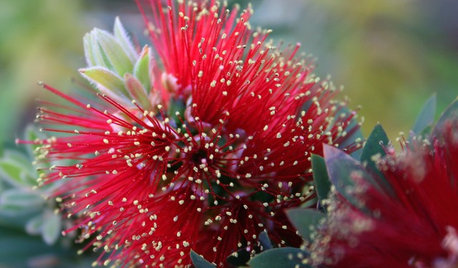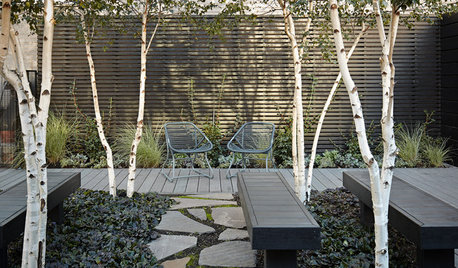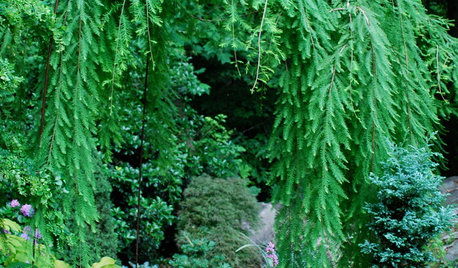Training dwarf trees
alan haigh
9 years ago
Related Stories

GARDENING GUIDESGreat Design Plant: Velvety Dwarf Bottlebrush Beckons a Touch
Brilliant red blooms and inviting textures will capture your heart, but the low maintenance and small size will win over your practical side
Full Story
HOUZZ TVHouzz TV: This Dream Midcentury Home in a Forest Even Has Its Own Train
Original wood ceilings, a cool layout and, yes, a quarter-scale train persuaded these homeowners to take a chance on a run-down property
Full Story
EDIBLE GARDENSHow to Add an Apple Tree to Your Edible Garden
Readily available, beautiful and fragrant, apple trees offer four-season interest along with crisp, juicy fruit
Full Story
EDIBLE GARDENSHow to Grow 10 Favorite Fruit Trees at Home
Plant a mini orchard in fall, winter or early spring to enjoy fresh-off-the-tree fruit the following year
Full Story
GARDENING AND LANDSCAPINGCrazy for Fruit Trees
Whether a single citrus or a mini apple orchard, even the smallest landscape space can bear deliriously delicious fruit
Full Story
SIDE YARD IDEASNarrow Trees for Tight Garden Spaces
Boost interest in a side yard or another space-challenged area with the fragrance and color of these columnar trees
Full Story
LANDSCAPE DESIGNPretty Trees for Patios, Paths and Other Tight Spots
Choose trees for their size, shape and rate of growth — or shape them to fit your space. Here's how to get started
Full Story
LANDSCAPE DESIGN5 Ways to Use Trees to Create a Sensational Garden Space
Trees define spaces in multiple ways and bring a layer of shade and intrigue to the landscape
Full Story
SPRING GARDENING7 Spectacular and Practical Spring-Flowering Trees
Put on a beauteous show in the garden with a landscape tree awash in flowers — just do your homework first
Full Story
LANDSCAPE DESIGNThe Weepers and the Creepers: 10 Intriguing Trees for Your Garden
Bring something a little different to your landscape with a tree that dives, twists or crawls
Full StoryMore Discussions







RedSun (Zone 6, NJ)
drew51 SE MI Z5b/6a
Related Professionals
Ilchester Landscape Architects & Landscape Designers · Willowick Landscape Architects & Landscape Designers · Norwood Landscape Contractors · Peabody Landscape Contractors · Barrington Landscape Contractors · Indianapolis Landscape Contractors · Leicester Landscape Contractors · Madera Landscape Contractors · Oklahoma City Landscape Contractors · Salem Landscape Contractors · Siloam Springs Landscape Contractors · Smyrna Landscape Contractors · Waltham Landscape Contractors · Whitehall Landscape Contractors · Wilsonville Landscape Contractorsalan haighOriginal Author
2010champsbcs
nyRockFarmer
RedSun (Zone 6, NJ)
alan haighOriginal Author